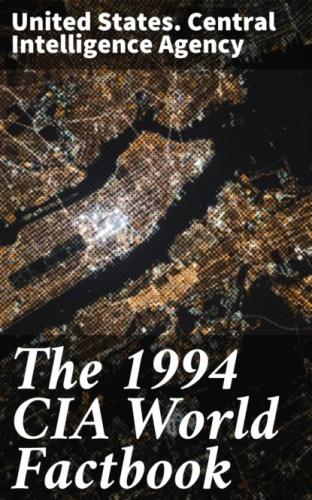Anniversary of the Revolution, 1 November (1954)
Constitution:
19 November 1976, effective 22 November 1976; revised 3 November 1988
and 23 February 1989
Legal system:
socialist, based on French and Islamic law; judicial review of
legislative acts in ad hoc Constitutional Council composed of various
public officials, including several Supreme Court justices; has not
accepted compulsory ICJ jurisdiction
Suffrage:
18 years of age; universal
Executive branch:
chief of state:
President Lamine ZEROUAL (since 31 January 1994); next election to be
held after a three-year transition period which began on 31 January
1994
head of government:
Prime Minister Mokdad SIFI (since 11 April 1994)
cabinet:
Council of Ministers; appointed by the prime minister
Legislative branch:
unicameral
National People's Assembly (Al-Majlis Ech-Chaabi Al-Watani):
elections first round held on 26 December 1991 (second round canceled
by the military after President BENDJEDID resigned 11 January 1992,
effectively suspending the Assembly); results - percent of vote by
party NA; seats - (281 total); the fundamentalist FIS won 188 of the
231 seats contested in the first round; note - elections (municipal
and wilaya) were held in June 1990, the first in Algerian history;
results - FIS 55%, FLN 27.5%, other 17.5%, with 65% of the voters
participating
Judicial branch:
Supreme Court (Cour Supreme)
Political parties and leaders:
Islamic Salvation Front (FIS, outlawed April 1992), Ali BELHADJ, Dr.
Abassi MADANI, Abdelkader HACHANI (all under arrest), Rabeh KEBIR
(self-exile in Germany); National Liberation Front (FLN), Abdelhamid
MEHRI, Secretary General; Socialist Forces Front (FFS), Hocine Ait
AHMED, Secretary General
note:
the government established a multiparty system in September 1989 and,
as of 31 December 1990, over 50 legal parties existed
Member of:
ABEDA, AfDB, AFESD, AL, AMF, AMU, CCC, ECA, FAO, G-15, G-19, G-24,
G-77, IAEA, IBRD, ICAO, IDA, IDB, IFAD, IFC, ILO, IMF, IMO, INMARSAT,
INTELSAT, INTERPOL, IOC, ISO, ITU, LORCS, NAM, OAPEC, OAS (observer),
OAU, OIC, OPEC, UN, UNAVEM II, UNCTAD, UNESCO, UNHCR, UNIDO, UNTAC,
UPU, WCL, WHO, WIPO, WMO, WTO
Diplomatic representation in US:
chief of mission:
Ambassador Nourredine Yazid ZERHOUNI
chancery:
2118 Kalorama Road NW, Washington, DC 20008
telephone:
(202) 265–2800
US diplomatic representation:
chief of mission:
Ambassador Mary Ann CASEY
embassy:
4 Chemin Cheikh Bachir El-Ibrahimi, Algiers
mailing address:
B. P. Box 549, Alger-Gare, 16000 Algiers
telephone:
[213] (2) 601–425, 255, 186
FAX:
[213] (2) 603979
consulate(s):
Oran
Flag:
two equal vertical bands of green (hoist side) and white with a red
five-pointed star within a red crescent; the crescent, star, and color
green are traditional symbols of Islam (the state religion)
@Algeria, Economy
Overview:
The hydrocarbons sector is the backbone of the economy, accounting for
roughly 57% of government revenues, 25% of GDP, and almost all export
earnings; Algeria has the fifth largest reserves of natural gas in the
world and ranks fourteenth for oil. Algiers' efforts to reform one of
the most centrally planned economies in the Arab world began after the
1986 collapse of world oil prices plunged the country into a severe
recession. In 1989, the government launched a comprehensive,
IMF-supported program to achieve macroeconomic stabilization and to
introduce market mechanisms into the economy. Despite substantial
progress toward macroeconomic adjustment, in 1992 the reform drive
stalled as Algiers became embroiled in political turmoil. In September
1993, a new government was formed, one of whose priorities was the
resumption and acceleration of the structural adjustment process.
Buffeted by the slump in world oil prices and burdened with a heavy
foreign debt, Algiers in 1993 resumed negotiations with the IMF and is
on track to conclude a standby arrangement with the Fund in 1994.
National product:
GDP - purchasing power equivalent - $89 billion (1993 est.)
National product real growth rate:
1% (1993 est.)
National product per capita:
$3,300 (1992 est.)
Inflation rate (consumer prices):
22% (1993 est.)
Unemployment rate:
22% (1993 est.)
Budget:
revenues:
$14.4 billion
expenditures:
$14.6 billion, including capital expenditures of $3.5 billion (1992
est.)
Exports:
$11.4 billion (f.o.b., 1993 est.)
commodities:
petroleum and natural gas 97%
partners:
Italy 21%, France 16%, US 14%, Germany 13%, Spain 9%
Imports:
$9 billion (f.o.b., 1993 est.)
commodities:
capital goods 39.7%, food and beverages 21.7%, consumer goods 11.8%
(1990)
partners:
France 29%, Italy 14%, Spain 9%, US 9%, Germany 7%
External debt:
$26 billion (1994)
Industrial production:
